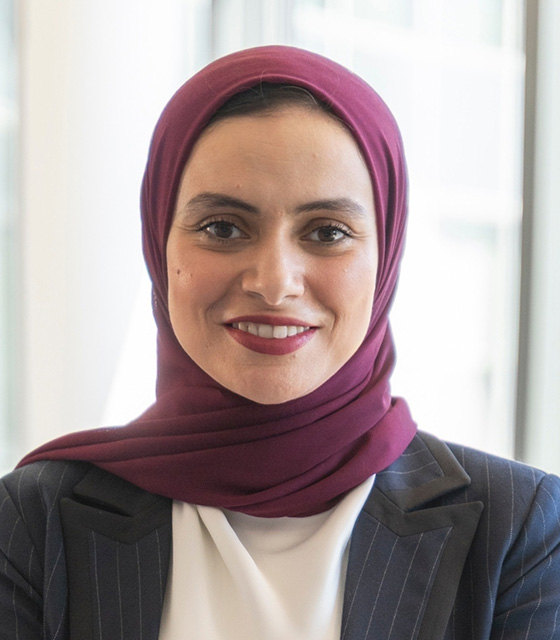One positive sign that Indonesia has survived the financial crisis is news that ratings agency Standard & Poor’s revised the country’s rating outlook to positive at the end of October.
The country’s strong domestic economy has also helped in partly cushioning it from plunging exports and the global financial crisis.
But as President Susilo Bambang Yudhoyono launches into his second five-year term with a new cabinet, he is under pressure to ensure Indonesia maximises its economic and trade potential.
In the first eight months of the year, Indonesia’s non-oil and gas exports fell to US$60.01bn from US$73.46bn. Including oil and gas exports, which had benefited from the commodity price boom, exports have plunged to US$70.3bn versus US$95.39bn.
Exports have been picking up month-on-month since February – aside from a brief blip in April – but nonetheless the trade ministry forecasts a maximum 15% drop in non-oil and gas exports in 2009, with a rebound to 2008 levels hoped for 2010.
Imports too have plunged and investment growth slowed. Year-to-date non-oil and gas imports fell to US$48.63bn from US$66.68bn, while – including oil and gas – imports show a drop to US$59.36bn from US$90.35bn.
This weakness, which includes imports of capital goods, is reflected in investment data; the most recent figures show second quarter investment growth slowed to 2.7% year-on-year compared with 3.4% in the first quarter.
Government spending of its infrastructure budget has as usual proved slow this year and some private sector projects have been delayed by the final crisis. But nonetheless the resurgence in export credit agency (ECA)-backed deals in Indonesia persists, with banks still reluctant to take on longer tenor financing of large projects.
Well-priced deals
Rashed Maqsood, director of global transaction services at Citibank, says Indonesia has up to US$1bn in potential ECA-backed deals to be signed off in the remaining months of 2009.
“The main need is for telecoms and aviation and it is now being expanded into other infrastructural areas,” says Maqsood.
“For a bank to do 10 years financing directly is at this point difficult. If it is done through an ECA it’s much easier,” he adds.
And Evert Jan Zondag of RBS global banking and markets says a company seeking large loans could save themselves 50-100 basis points (bp) with an ECA-backed deal versus a straight bank loan or bond offering.
“Even though many of the banks are starting to come back to the market and give clean financing – the Adaro transaction was a real success and very, very interesting to see how that has reopened the markets – the pricing versus our ECA transactions is still high,” he notes.
The Adaro transaction he refers to is a deal closed in October by Adaro Indonesia, the country’s second largest coal miner. The firm raised a US$800mn bond, ensuring the facility was Asia’s largest issue of high yield corporate debt so far this year. The senior notes have a 10-year tenor and annual yield of 7.625%.
Indonesia’s telecoms operators have planned large amounts of capex and this is being partly financed through ECA-backed facilities.
HSBC closed a US$315mn financing for Jakarta-listed mobile phone and internet operator Indosat in August. The loan matures in 2011 and is backed by Swedish export credit agency EKN to finance the company’s purchase of equipment from Ericsson.
And there is likely to be more to come; Telkomsel, the largest mobile operator, had announced US$1.5bn in capex for 2009 and recently said it is looking at US$1.3bn to US$1.5bn for 2010.
Extra support for trade
Support for trade finance in Indonesia is intended to come from several sources: government, the Asian Development Bank and the International Finance Corporation.
At a government level, Indonesia agreed to make US$10.5bn available for trade finance over two years.
Dian Rae, Bank Indonesia deputy director of the international directorate, says that much of this may not need to be utilised, because in Indonesia the drop in exports was driven by demand, not liquidity problems.
He says the size of the finance available is “quite high for Indonesia. Because we think that the market can still provide itself with the financing”.
No bank has come to the central bank and requested the rediscount facility that was reintroduced this financial crisis, he observes, adding that banks have said they are not even using all the financing they have made available for trade.
As well as making funds available for its rediscount facility, Bank Indonesia is in the final stages of signing a US$1bn bilateral swap with China to be used for balance of payments and trade support.
Some of the funds will also be used to support state banks and some used to capitalise the newly formed export-import bank.
On September 1 this year, Indonesia transformed Bank Ekspor Indonesia into Indonesia Eximbank with a start-up capital of almost US$400mn and an additional US$200mn due next year.
But despite domestic fanfare, the bank has yet to support any trade and is, in fact, still establishing its business objectives. It did, however, sign a US$100mn loan agreement with the Japan Bank for International Cooperation in October – designed to boost trade finance.
The interest is Libor plus 230bp and the bank wants to cut interest rates for dollar finance by 2% next year to around 5%.
Other international efforts to support Indonesian trade finance are progressing, although slowly.
The Asian Development Bank (ADB), having increased its maximum exposure limit from US$150mn to US$1bn in April, has now received internal endorsement for trade finance credit lines with two Indonesian banks, and is preparing to sign the legal documents with them and 10 others in November.
Separately, the bank has also backed underlying trades worth US$50mn – though not to the full amount – having signed risk participation agreements with five international banks.
“Indonesia we see as a very liquid market. The demand is usually for the bigger transactions, for longer tenors that the international banks sometimes have difficulty to support on their own,” says Biao Huang, investment specialist for the private sector at the Asian Development Bank.
The International Finance Corporation (IFC) also wants to inject US$300-US$400mn into its Indonesian trade finance programme – which also covers long-term finance and risk-sharing – and has already allocated US$55mn to Bank Danamon and Bank Hana, says country manager Adam Sack. It also intends to inject another US$300-US$400mn in a second trade liquidity programme.
Citi’s Maqsood says the bank is signing up with ADB and IFC and says customers will benefit.
“For them it’s a bit of extra paperwork but nothing changes beyond that. They get what they want with good pricing, the tenor is more relaxed. It’s more of a credit sharing. That is progressing well.”
LC regulations
In January this year, Indonesia’s trade ministry enacted a regulation stating that exports of certain commodities, including coal and crude palm oil, valued at more than US$1mn must be backed by a letter of credit and paid into Indonesian bank accounts.
Enforcement of the regulation has been repeatedly delayed following complaints from exporters, who were finally permitted to apply for exemption on a contract by contract basis.
The latest postponement expires on November 1 and, with reports suggesting that ousted vice-president Jusuf Kalla was the chief proponent of the regulation, it’s unclear yet whether the regulatiion will be imposed or cancelled.
But for other transactions, bankers do report some small uptick in demand in the last two or three months for letters of credit.
Yen Yen Setiawan, Standard Chartered head of transaction backing for Indonesia, says that as trade has picked up in the last few months, so too has demand for letters of credit.
“We’re starting to see a pick up in the second half of this year. The first half was quite quiet,” she says.
Andri Anto Wahyu Adi, vice-president for trade finance at Bank Mandiri, Indonesia’s largest bank by assets, says the increase in LCs over the last two months was virtually “insignificant”, but sees a “quite strong” demand for forfaiting services.
Bank Mandiri’s discounting rate is now an average 5% versus 6% at the peak of the credit crunch, he adds. And having increased forfaiting fees and earnings this year, he also expects the bank’s earnings from forfaiting to jump 40% in 2010.
He says the trade finance market is still “quite good” for Bank Mandiri and highlights a reluctance among Indonesian banks – whose cost of capital is higher than internationals – to reduce their margins.
Market players agree that the pricing of trade finance products has come down since the tightest days of the credit crunch, but in Indonesia much of this is attributed to cuts in the central bank interest rates.
Indonesia’s central bank, Bank Indonesia, has cut rates from 9.25% in December last year to 6.5% currently and bankers say that the 3% decline accounts for much of the reduction in real prices of trade financing.
But margins have also dropped. Citi’s Maqsood comments: “The pricing of trade financing increased manifold during the crisis time, but came back to normal levels already from the second quarter this year, from May or June. Now it is at [the] pre-crisis price.”
He says trade finance pricing in Indonesian rupiah “probably shot up from 2% to 2.5% to almost 4% or 5%. Now it’s back to around 3 %”. And demand, “is increasing but probably not to the peak level”, he adds.
Ady Yatim, head of trade finance at Deutsche Bank, says the cost of trade finance has dropped to 200 to 250bp above the cost of funds – usually sibor – compared with 300 to 350bp in April.
In part, successful elections that confirmed President Susilo Bambang Yudhoyono will take a second five-year term have cut Indonesia risk and bolstered market confidence, as has a successful leadership race for the Golkar party, the vehicle for former President Suharto.
But with Indonesia as one of just a clutch of Asian nations – alongside China and India – expected to post positive growth this year, banks including ANZ, OCBC and banks from China, India and Singapore are delving into the Indonesian trade finance market for the first time.
“There’s more liquidity now. Other banks are now more comfortable and there are a lot of new players in the market,” Yatim at Deutsche notes. “Interest is a very good barometer. Now even at 200bp we still have to bargain with the customer because their access to financing is easier.”
Bank risk has also dropped again. Yatim says before the financial crisis, bank risk would have been approximately 60bp, but this rose to 200 to 250bp one year ago, before falling back to current levels of 100 to 150bp.
Setiawan at Standard Chartered agrees that more players are entering the market. “There’s more competition coming in, so there’s more demand for lower pricing from the prime clients, but the banks have a bigger pie to fight for than six months ago.”






